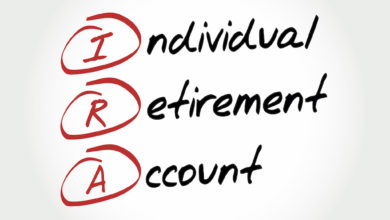LearningNewsletterRetirement
Crucial Retirement Plan Updates for 2024: A Must-Know Guide
In late 2022, the SECURE Act 2.0 brought forth over 90 rule changes that will
revolutionize IRAs and qualified retirement plans. These changes will be
implemented gradually over the next few years.
Here are some key developments that took effect in 2023 or will be implemented in
2024:
- 529 Education Savings Plan Rollover: For the first time ever, excess funds in a
529 plan can be rolled over to a Roth IRA. While there are limitations, this rollover
offers flexibility for those who might not use all the money for education. - No more Required Minimum Distributions (RMD) for Roth 401(k) accounts: Previously, RMDs created a distinction between Roth 401(k)s and Roth IRAs, deterring some from using Roth 401(k)s. Now, this rule no longer applies, providing greater freedom for account owners.
- Catch-Up Contributions for Higher-Income Employees: Individuals aged 50 and older who earn more than $145,000 will be able to treat their catch-up contributions to 401(k) plans as Roth-type contributions. This rule covers both traditional and Roth 401(k)s, with contributions included in gross income and subject to taxes.
- Inflation-Adjusted Catch-Up Contribution Limit for IRAs: The catch-up contribution limit for individuals aged 50 and older will now be indexed for inflation, replacing the fixed limit of $1,000 seen in recent years.
- Penalty-Free Early Distributions: Starting in 2024, more types of early distributions can be taken penalty-free before reaching age 591⁄2. This includes distributions for domestic-abuse victims and emergencies defined by the tax code and IRS guidance.
- Expanded Retirement Plan Provisions: Employers will now have the option to add additional provisions to their retirement plans. This includes allowing employees to establish and fund emergency savings accounts through employer plans.
- Simple and Affordable Starter 401(k)s: To encourage employers who do not offer retirement plans, they can now provide simple and low-cost starter 401(k)s. Additionally, employers will receive a tax credit for part or all of the costs associated with establishing new retirement plans for employees.
- Increased Employer Contribution Limit for SIMPLE Plans: The contribution limit for SIMPLE plans has risen to $16,000, with individuals aged 50 and older able to contribute an additional $3,500 as a catch-up contribution.
These exciting changes brought by the SECURE Act 2.0 signify a new era for IRAs and retirement plans. Stay informed with the IFW and take advantage of these opportunities for a brighter financial future.
Scott Rosen is the Executive Vice-President and Research Champion of the IFW. Scott is a 30-year veteran of the financial services industry.
Scott began his career at MetLife as a Financial Representative in North Miami Beach, Florida. Just under four years later Scott was promoted to be the Regional Marketing Director in South Florida. Scott was promoted again two years later to be an Assistant General Manager in the Plantation Florida office. In 2001, Scott Joined Phoenix Life beginning the next phase of his career as a financial product wholesaler covering Miami Florida. With his success, he was recruited and became a Regional Account Manager at Lincoln Financial covering all of Florida as well as parts of Alabama. In 2015, Scott joined MassMutual South Florida as the Brokerage Director until joining The IFW in 2021. Throughout Scott’s career, he has won numerous awards for his success and continued service to producers and their clients.






